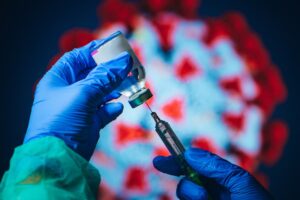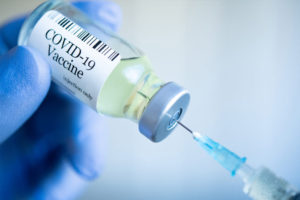What are the three types of vaccines available?
Pfizer-BioNtech, Moderna, and Johnson & Johnson.
What is the difference between the three different vaccines?
Both the Moderna and the Pfizer-BioNTech are mRNA vaccines. Both of these vaccines require two doses. The Johnson & Johnson vaccine is a vector vaccine, which causes side effects such as a cold. With this being said, the Johnson & Johnson vaccine requires a single dose. The vaccines vary in effectiveness with the Moderna vaccine at 94% effective after two doses, the Pfizer-BioNTech is 92% effective, and the Johnson & Johnson vaccine is 66% effective. All three are safe to use according to the FDA.
Are the three vaccines safe?
So far, research shows that all three vaccines are safe.
How long will the vaccine protect me from COVID-19?
While it is too early to know for certain, research shows that the vaccine protects people from COVID-19 for at least 4 months.
Can I get COVID-19 from the vaccine?
Like any vaccine, it is impossible for you to contract COVID-19 from the vaccine. The vaccine gives your immune system a preview of the disease and the ways to fight it off.
Who does the COVID-19 vaccine protect?
Studies show that all three vaccines protect people from ages 18-85 years old. More research needs to be done for people younger than 18, as well as pregnant women.
What if I am pregnant, breastfeeding, or plan to become pregnant?
Women who plan on becoming pregnant can receive the vaccine. The FDA allows for women who are pregnant to receive the vaccine despite the lack of research. If you are pregnant, talk to your doctor about receiving the vaccine. If you are breastfeeding, you can receive the vaccine and do not need to stop breastfeeding.
Once I receive the vaccine, do I need to wear a mask and social distance?
Yes. Research shows that people can transmit COVID-19 through their nose even if they are vaccinated.
Is the vaccine safe for people with allergies?
People who are allergic to environmental allergens, foods, latex, oral medications, and stinging insects can receive the COVID vaccine safely. However, if you have severe allergic reactions to anaphylaxis or polyethylene (PEG), the CDC recommends against taking the vaccine.
Are there any preemptive measures taken to ensure that I do not have an allergic reaction to the vaccine?
Immediately following the shot, patients wait 15 minutes (30 minutes for people who have a history of severe allergic reactions) to ensure that they do not have an allergic reaction to the vaccine.
Will I be able to choose which vaccine to get?
Currently, the supply of COVID-19 vaccine doses are limited, so you are offered whichever vaccine is available.
Do all three vaccines prevent death due to COVID-19?
All three vaccines are 100% effective at preventing hospitalizations and deaths from COVID-19.
Will I be mandated to take the COVID vaccine?
At this time, no, there is no government mandate.
What is Post-COVID Syndrome?
After someone has COVID, some people experience lingering symptoms from the virus.
What are some of the symptoms for Post-COVID-Syndrome?
Some of the most common symptoms include (but are not limited to) fatigue, difficulty breathing, joint pain, chest pain, brain fog, impaired memory, loss of taste, loss of smell, and sleep issues.
How long will these symptoms last?
Symptoms can last for at least 6 months or longer.
What causes these symptoms to linger?
It is unclear why symptoms linger, despite negative tests. Hypotheses range from prolonged inflammatory response to hidden areas of infection.
Can I experience post-COVID syndrome even if I did not have severe symptoms?
Yes. Patients who experience post-COVID syndrome range from mild symptoms to hospitalization.
If I have COVID-19, what are the chances that I will experience post-COVID syndrome?
This is still widely unknown. Some studies suggest that 10% of people with COVID develop post-COVID syndrome, while others suggest that it is as high as 70%.
Which demographics are at the highest risk of developing post-COVID syndrome?
Adults over the age of 50, people who experience a severe case, individuals with underlying health conditions (such as cardiopulmonary issues, hypertension, diabetes, and obesity).
What can I do if I am experiencing post-COVID syndrome?
Call your doctor. If you are experiencing mild symptoms, your doctor can help. If you are experiencing more severe symptoms, your doctor will refer you to a specialist.
What are the different kinds of specialist geared to help me combat post-COVID syndrome?
The specialists include (but are not limited to) cardiology, pulmonologist, gastroenterology, hematology, nephrology, neurology, endocrinology, psychiatry, physical medicine and rehabilitation, and primary care.



